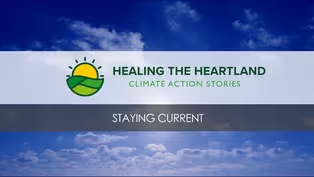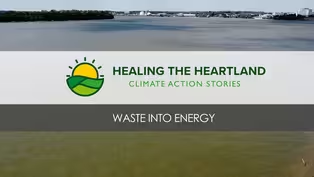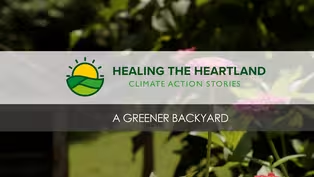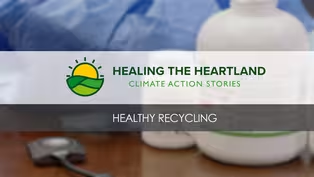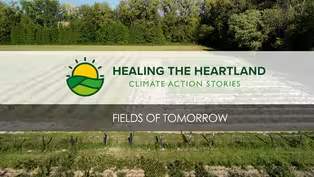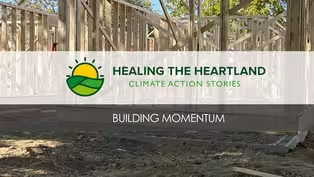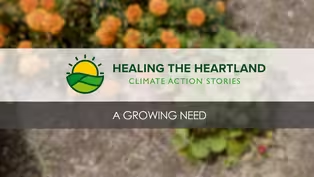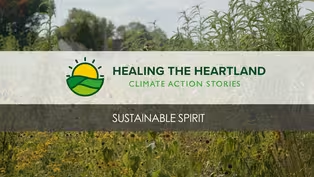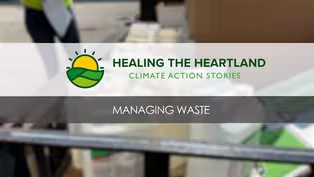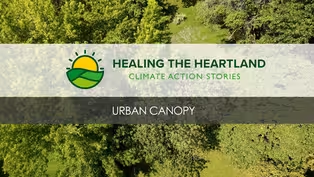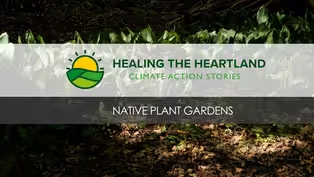Healing the Heartland: Climate Action Stories
Waste Into Energy
Clip | 3m 8sVideo has Closed Captions
Mesker Park Zoo and the Evansville Water Sewer Utility describe how they turn waste into energy.
Mesker Park Zoo and the Evansville Water Sewer Utility describe how they turn waste into energy.
Problems playing video? | Closed Captioning Feedback
Problems playing video? | Closed Captioning Feedback
Healing the Heartland: Climate Action Stories is a local public television program presented by WNIN PBS
Healing the Heartland: Climate Action Stories
Waste Into Energy
Clip | 3m 8sVideo has Closed Captions
Mesker Park Zoo and the Evansville Water Sewer Utility describe how they turn waste into energy.
Problems playing video? | Closed Captioning Feedback
How to Watch Healing the Heartland: Climate Action Stories
Healing the Heartland: Climate Action Stories is available to stream on pbs.org and the free PBS App, available on iPhone, Apple TV, Android TV, Android smartphones, Amazon Fire TV, Amazon Fire Tablet, Roku, Samsung Smart TV, and Vizio.
When we talk about sustainable practices, our waste stream and what we do with our trash is just as important as reducing our usage on the front end.
so right now we're at our what we call a botanical service center.
it has serves many purposes.
We have hay storage over here.
We have tropical greenhouses behind me.
but one of the biggest components is our large compost pile.
and so you can't really smell it on camera, but you can definitely see it on camera.
we've had a compost facility on zoo property for over 20 years now.
so all of that animal waste, hay, feces, manure, even our compostable plates and items and all of our kitchen scraps come over here, instead of going to the landfill.
and so for us, what we do is we create a compost pile with waste, and, and we're turning it over.
So we're turning it over till it breaks down into soil.
And then what we do with that soil is we take it back over to the zoo and then mix it with our mulch and use it in all of our planter beds around the zoo.
So, when you're traveling around the zoo and our tropical gardens and our outdoor areas that are mulched and look beautiful, it's because the animal waste is helping, reinvigorate it.
When you treat wastewater, you generate clean water.
There's some carbon dioxide that's generated in the treatment process, and then, you make sludge, so.
And the sludge is a resource that we can use to make energy from.
And that's really what this is about.
So basically, when you flush your toilet or run water down the drain, that water ends up in the sewer, which ultimately comes, to the wastewater plants.
We have an east plant.
down here.
We have a west plant over on the west side.
those two plants actually.
Are there to remove something we call B-O-D. which is, organic chemicals that are in the water.
And if those were just released into the river, organisms in the river would, would consume that material and use up all the oxygen and kill the fish.
So our job is to take that stuff out before it goes to the river, So basically, we've industrialized the natural process that happens and would have happened in the waterway.
And then from that we end up with sludge.
we take that sludge and put it into something called an anaerobic digester.
in an anaerobic digester, there's a different kind of organisms that live in the water.
They operate without oxygen, and instead of releasing carbon dioxide, they release methane gas.
And we collect that methane gas and use it to power generators that make electricity.
That offsets part of the, electrical demand for the plant.
which is obviously going to reduce our carbon footprint,
Clip | 3m 44s | Solar systems can be energy and cost efficient for residential and commercial buildings. (3m 44s)
Clip | 4m 19s | Both personal and mass transit electric vehicles greatly reduce greenhouse gas emissions. (4m 19s)
Video has Closed Captions
Clip | 3m 8s | Mesker Park Zoo and the Evansville Water Sewer Utility describe how they turn waste into energy. (3m 8s)
Video has Closed Captions
Clip | 3m 59s | Using native plants to have a lower impact on the environment. (3m 59s)
Video has Closed Captions
Clip | 3m 7s | A partnership between Berry Plastics and Deaconess Health helps reduce medical waste. (3m 7s)
Video has Closed Captions
Clip | 4m 35s | Sustainable farming practices and innovations. (4m 35s)
Video has Closed Captions
Clip | 3m 8s | Affordable, energy efficient housing program and affordable, restorative housing program. (3m 8s)
Video has Closed Captions
Clip | 3m 20s | How choosing local food and reducing food waste can help with climate change. (3m 20s)
Video has Closed Captions
Clip | 3m 31s | Local faith groups talk about the importance of environmental stewardship. (3m 31s)
Video has Closed Captions
Clip | 3m 10s | Dubois County Ag Day featuring plastic, tire, and pesticide container recycling programs. (3m 10s)
Video has Closed Captions
Clip | 4m 29s | Learn about the importance of an urban canopy. (4m 29s)
Video has Closed Captions
Clip | 4m 22s | Native plants combat climate change. (4m 22s)
Providing Support for PBS.org
Learn Moreabout PBS online sponsorship
- Science and Nature

Explore scientific discoveries on television's most acclaimed science documentary series.

- Science and Nature

Capturing the splendor of the natural world, from the African plains to the Antarctic ice.












Support for PBS provided by:
Healing the Heartland: Climate Action Stories is a local public television program presented by WNIN PBS
